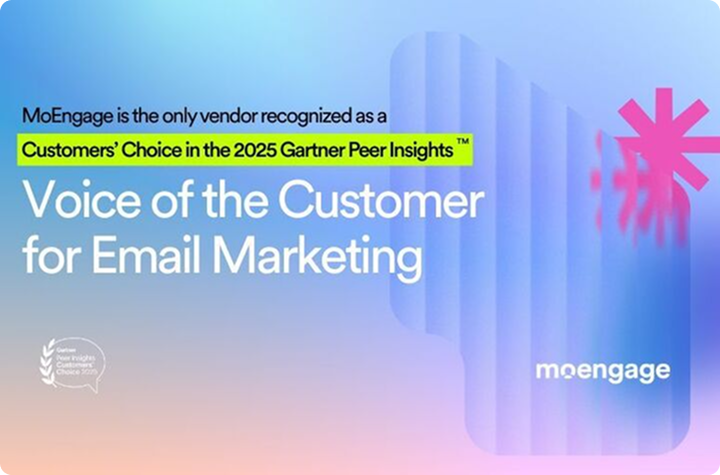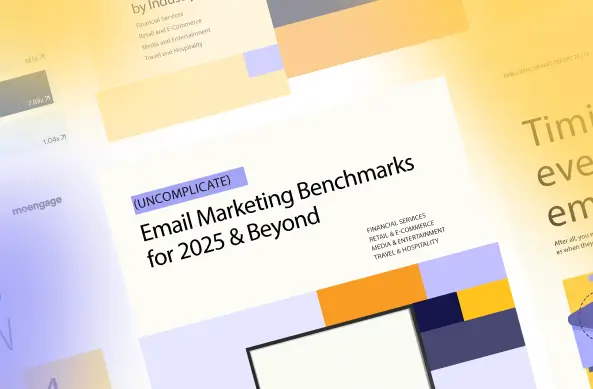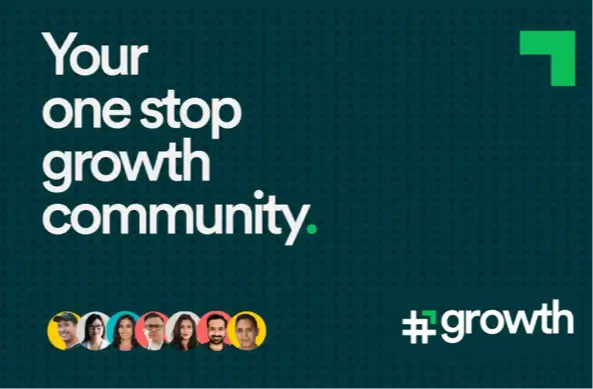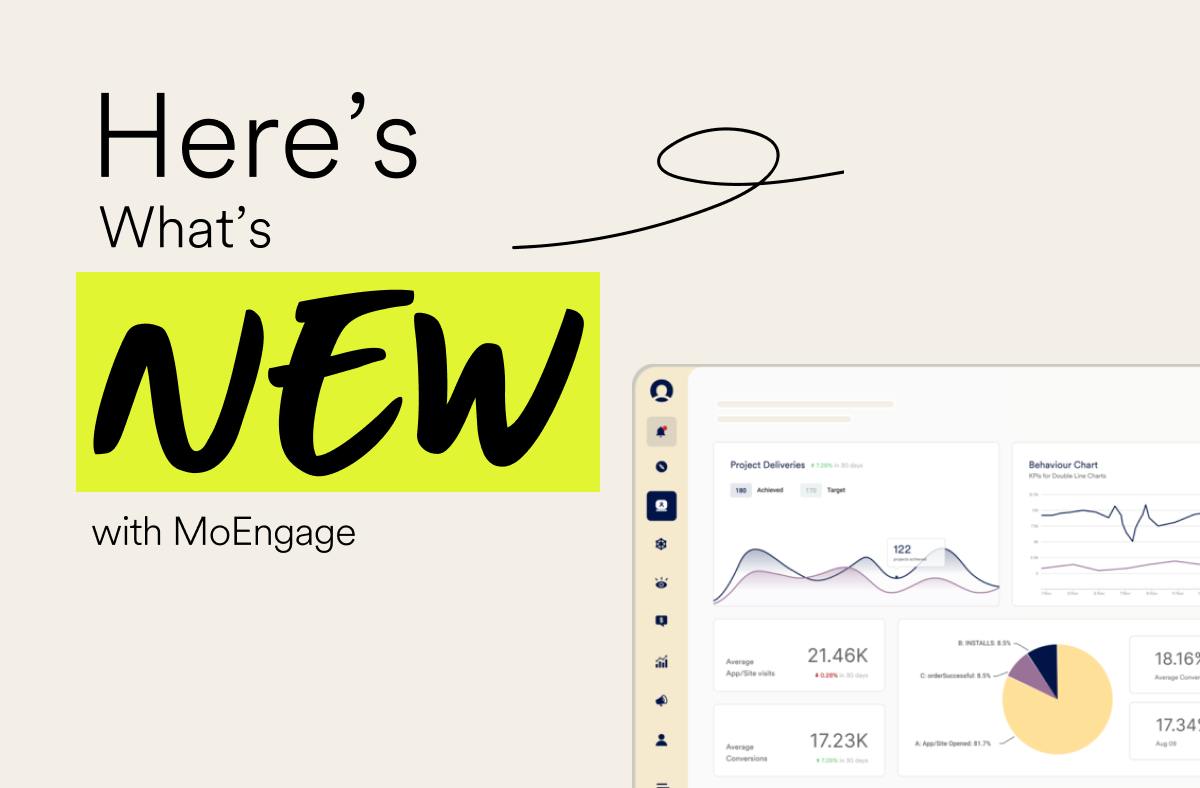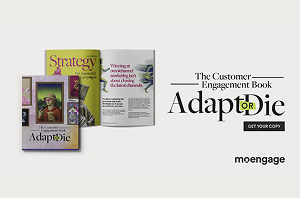Phil Gamache Q&A: Customer Engagement Book Interview
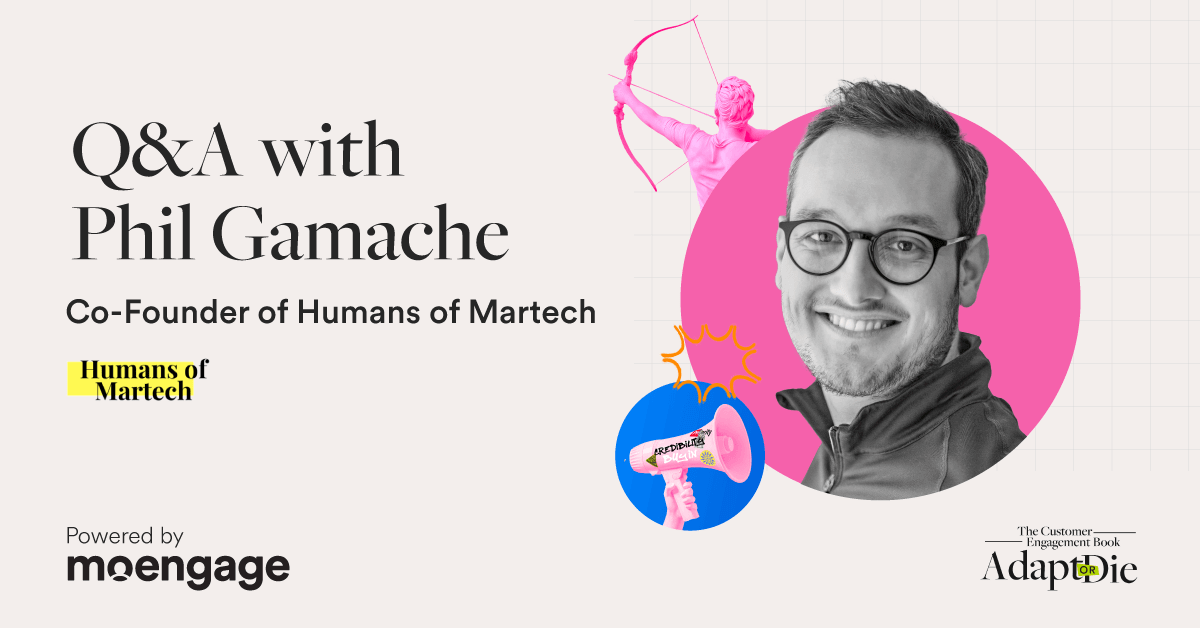
Reading Time: 8 minutes
While moving quickly and keeping up with the pace of innovation is key for today’s marketing teams, it’s critical to gain stakeholder buy-in and establish internal credibility first.
That’s why we sat down with Phil Gamache, Co-Founder of Humans of Martech, for an insightful Q&A session.
As part of Chapter 4 in “The Customer Engagement Book: Adapt or Die,” we wanted to delve into the strategies and tactics that can help marketers successfully pitch new ideas, tools, and campaigns within their organizations.
Phil, with his extensive experience, shares invaluable insights on everything from building early credibility with small wins to showcasing the value of marketing initiatives to diverse stakeholders.
In this interview, Phil unpacks the nuances of aligning marketing goals with broader business objectives, navigating departmental priorities, and effectively communicating the long-term impact of marketing investments.
Get ready to learn how to leverage data, understand your audience, and master the art of stakeholder mapping to drive successful marketing outcomes. Whether you’re a seasoned marketer or just starting out, Phil’s advice offers a roadmap for building influence and trust, and for pushing innovative ideas forward.
Phil Gamache Q&A Interview
1. Early in your marketing career, what steps did you take to establish credibility when proposing new campaigns, tools, or strategies?
The first thing that comes to mind is getting results, doing the work, keeping your head down, showing the results (good and bad), and communicating that to multiple different stakeholders.
I did a lot of unsexy things that many team members didn’t want to do.
Like fixing URL parameters, standardizing campaign naming conventions, and building proper tracking documentation.
I made friends with key teams. One of my biggest allies early on was Sales. I think marketing loves to live in their own bubble and it’s easy to get caught in the motion and not spend the right amount of time showing how your campaigns directly impact sales performance. That was a fast track to credibility for me.
Something else that helped was focusing on small projects vs making huge swings and taking on massive projects. I learned to pitch tiny optimizations that could be measured in days.
When I noticed our form completion rates were really low, I didn’t propose a complete redesign. Instead, I tested progressive profiling on our highest-traffic form.

We saw big improvements really quickly. That single win got me the green light for bigger changes.
2. How do you showcase the value of a new marketing idea or tool to stakeholders who might not fully understand its importance?
There’s an art to knowing your audience and tailoring that pitch, just like you would for external prospects.
Chat with all your stakeholders and make sure you understand what their OKRs/KPIs are so you can tailor your pitch to show how the impact will ladder up to the metrics they need to improve.
Ultimately though: “How does this make us money?” is the fundamental thing that most senior leaders care about. Your goal is to translate the technical problem into business impact.
I like the “Problem-Impact-Solution” storytelling framework. For example, when pitching a new customer engagement platform, you could:
- Problem: “We’re wasting tons of hours manually sending broadcasts when 70% of these could be drip campaigns”
- Impact: “Our team spends 25 hours per week on manual sends, and we’re missing prime engagement windows for international customers”
- Solution: “This tool can automate these workflows and hit customers in their time zones, which similar companies have seen increase engagement by 40%”
I also like to hit my network and chat with folks that have recently completed similar implementations so you can add to your deck things like “Company X implemented this and saw a 3x increase in qualified leads within 60 days” hits different than “this could improve our efficiency.”
Also, always run a POC first.
Stakeholders don’t care about tools – they care about outcomes.
They don’t need to understand the technical details of how your new CDP works. They need to understand that it’ll help them hit their numbers.
3. What role does industry knowledge or competitor benchmarking play in building credibility as a marketer?
The value of industry knowledge is in the nuance of differing opinions. There isn’t a perfect answer to any problem.
Two leading experts could disagree on the right approach. All you can do is gather data and have a more informed opinion to bring back to your company’s problems.
Industry knowledge should inform your decisions, not make them for you. That’s what builds real credibility.
Competitor benchmarking is a different animal.
I love looking at what competitors are doing, to make sure we’re doing something different. Drastically different.
Competitors shouldn’t decide your strategy, I don’t really care what tool they use, what their H1 is or what their welcome emails say.
4. How do you identify the most influential stakeholders when introducing new marketing programs or technologies?
Stakeholder mapping is one of the most underrated parts of many jobs. Sounds boring, but it’s so key.
One of my favorite bosses had a motto of doing “coffee tests” to find influential stakeholders.
Like mapping out the decision chain is part of it, but the next step is figuring out who each person in that chain goes to for coffee chats before making decisions.
Sometimes it’s not super obvious. Your CMO might be really tight with a senior product manager and run a lot of decisions by them because they fit the company’s ICP.
From a purchasing/budget perspective, I’d chat with internal folks who recently secured new programs or tools and then walk me through the list of decision-making processes and who was the hardest to get buy-in from.
But can’t ignore the internal end users, ultimately they play a big role in championing certain things internally.
One last tip: Always look for the people who’ve been at the company the longest, those tenured folks.
They often have hidden influence networks or secrets about processes or insider info that aren’t obvious on any org chart.
I once saw a 15-year veteran HR person who had more real influence than some VPs because everyone trusted their judgment.
5. What strategies do you use to align marketing goals with broader business objectives to gain leadership buy-in?
I’m a big fan of KPI software when you have a PM on each team responsible for keeping it updated and neatly organized.
Usually best if it’s an org-wide tool that starts with company top line objectives, then you pick the most relevant objectives, and you build key results from marketing that will directly contribute to those objectives.
It’s basically creating objective chains that ladder down to projects and marketing goals. Then you list projects with milestones related to those KRs.
Link out to a deeper dive on “how does this project impact that metric” and go into use cases and predictions.
6. Can you share an example of how you navigated differing priorities between marketing and another department, such as sales or product, to secure approval for a campaign or tool?
Roadmap planning and debate meetings help you get alignment with other teams on the road ahead so there’s fewer surprises and less pushback.
Building allies within other departments and making sure they understand how your projects also contribute to their KPIs.
I like spending time getting to know the day-to-day pains of other departments that compete with my priorities and try to identify overlaps where we could both benefit from something I’m pitching.
7. When pitching a new marketing strategy or technology, how do you structure your presentation to resonate with both creative and data-driven stakeholders?
Part of what makes martech pros and marketing ops pros’ jobs really hard is the variety of stakeholders, creative and technical.
You have to wow a CMO with unique ideas, but you also need to impress a CTO with infrastructure considerations and documentation.
There’s an art to layering your pitch if you have to present in front of both audiences.
Like one slide with data and the next with a customer testimonial supporting the data type of thing.
Or showing visual mockups of the new customer flow and then showing how we’re going to design the A/B test.
8. What role does customer engagement data or campaign performance metrics play in convincing stakeholders to adopt a new idea?
Start with the money but show how customer engagement metrics ladder up to revenue.
I learned that raw engagement metrics mean nothing without context. Instead of saying “Our welcome email has a 15% open rate,” you could frame it as “We’re leaving $500K on the table annually because 85% of new customers never see our core value proposition.”
But the key is tying engagement metrics to revenue, like data echoes.
Low email engagement > leads to poor product activation > leads to higher churn or lower repeat purchase > total cost is approximately $X.
Doesn’t always need to be big flashy numbers as long as it’s something the stakeholder cares about.
9. How do you demonstrate the long-term impact of a marketing investment, such as new technology, on business outcomes like customer retention or revenue growth?
Similar thoughts as the last question, tying immediate metrics impacted by the new investment to lagging indicators all the way to revenue.
It doesn’t always have to be metrics and revenue though, especially for big, hairy implementations. I like setting up implementation milestones, realistic and time-bound.
Long-term impact implementations are really hard to measure. Focus on showing a clear path to value and having enough early indicators to prove you’re on the right track.
10. How do you prioritize which marketing programs or tools to advocate for when faced with limited budgets or competing initiatives?
I’m a fan of assessing impact, alignment, and lift.
Operational Impact: Current, measurable pain points and inefficiencies.
For example, “Our team spends 15 hours per week manually updating spreadsheets” or “Our current email system has a 10% failure rate in delivery.” These are tangible, immediate costs we can quantify.
- Strategic Alignment: How well the initiative aligns with broader company goals.
- Lift: Implementation, including team time, technical resources, and organizational change management.
11. What techniques have worked for you to gain support from cross-functional teams for an omnichannel marketing program or new martech investment?
Make time for a workshop with as many people as possible. Let each team define what failure looks like and bring ideas to the table ahead of time.
Break those up into quick wins and longer-term wins. Make everyone feel like a co-creator.
Your goal isn’t to convince everyone or persuade people, you want to create a shared vision that everyone feels ownership of. That’s alignment.
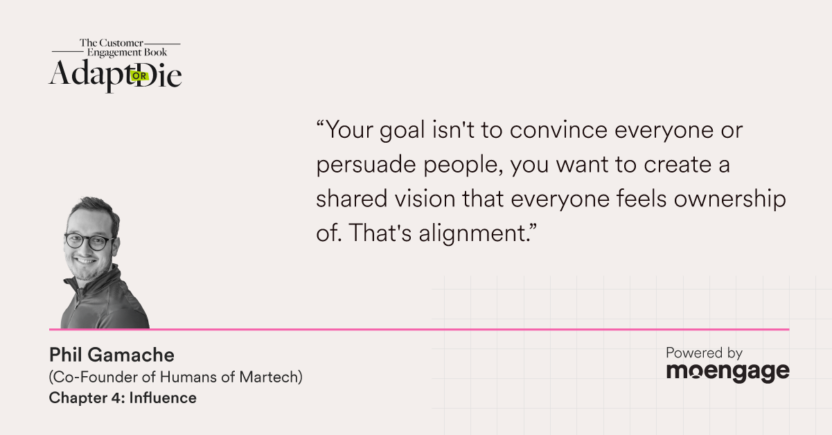
12. What advice would you give to younger marketers about building influence and trust when proposing innovative, and sometimes risky, marketing strategies?
Different folks have different risk tolerance. And it’s a wide spectrum.
Experimentation is a secret weapon to proving incremental impact of your ideas but also de-risking big bets.
Revamping new onboarding experience? Let’s test it on 10% of traffic first. Want to invest in a new channel? Let’s test it on a subset of our audience first.
Highlight things like manual override and risk buffers and rollback plans to make people feel safer. Show folks that you’ll be on top of what could go wrong and how you’ll detect it right away.
Always run a proof of concept when possible. Run a pilot on a subset of audiences on a small budget and walk into your meeting with results from that.
Also sometimes folks aren’t resistant to risk but resistant to change. Have 1:1s with those folks and find solutions and listen to them closely.
This interview Q&A was hosted with Phil Gamache, Co-Founder of Humans of Martech, for Chapter 4 of The Customer Engagement Book: Adapt or Die.
Download the PDF or request a physical copy of the book here.


